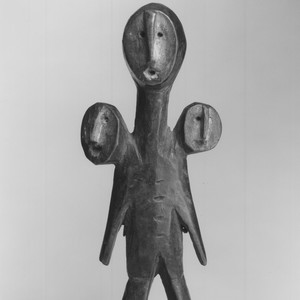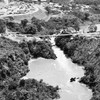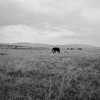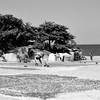Minziro: Tanzania’s disappearing paradise
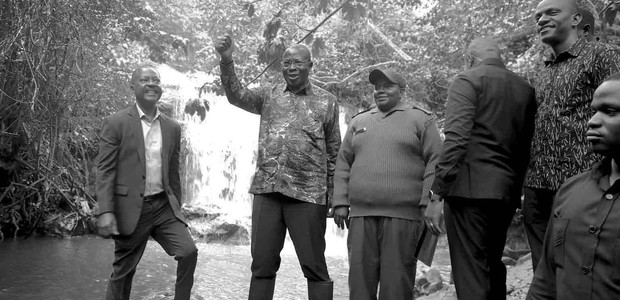
Tanzania has suffered severe deforestation, with approximately 400,000 hectares, about one percent of its forest, being felled every year.
The Global Forest Watch (GFW) details that Tanzania had 24.7 million hectares of tree cover, extending over 26 percent of its land area back in 2010. However, mainly because of energy consumption, settlement and economic activities, by 2020, it had lost 186,000 hectares of tree cover, equivalent to 67.7 million tons of CO₂ emissions, according to GFW. Even worse, a total of 180,000 hectares of land had burned in 2021, a fairly typical figure compared to previous years going back to 2001.
In the Kagera region, northwest of Tanzania, lies the highly celebrated Minziro Nature Forest Reserve – an outlier of the Guinea-Congo biome. Stretching from Senegal in West Africa through Central Africa and Uganda to Misenyi District, it is literally in danger of disappearing, a reality that residents blame on excessive wood consumption and encroachment into the wetland for farming and settlement.
Minziro forms a vital part of the ecosystem in northern Tanzania, both as a natural forest and a wetland. It maintains soil moisture and fertility, leading to high agricultural productivity.
It was paradise.
William Kyaichumu, a 62-year old man, born and raised in Minziro village, has seen dramatic change over the last 30 years. “It was paradise,” he said, adding that it is now “slowly disappearing”.
Kyaichumu says families used to go on holiday in the area. “This place is invigorating, you only breathe fresh air, and all the surrounding is green forest.”
He explains that even the passageways were covered, and bulldozers struggled to make roads. Not now, he said, noting that currently, one can stand and see miles away, including visible roads.
Residents acknowledge that the area was once food secure, famous for growing coffee, maise, beans, sugar cane and plantains.
“We are in a crisis,” another resident who preferred not to mention her name said. She and other residents described slowed rains and increasing temperature, which they saw as a direct result of human activities. The changing climate is threatening the natural forest and wetland, which is known as Sango Bay in neighbouring Uganda.
Laying at the boundary between Uganda and Tanzania, this transboundary wetland is located in Kakuuto and Kyotera counties, Kyotera District on the Ugandan side. In Tanzania, the bulk area lies within Misenyi District and smaller portions in Bukoba rural and urban districts.
Experts suggest that the landscape is an important bird area, providing habitat and breeding ground for diverse species. The wetland is home to rare and endemic species, including plants like wild coffee, the pseudagrostistachys ugandensis and the African yellow-wood. It is also the habitat of African golden cats, African elephants, leaf-nosed bats, leopards, tree pangolins, hippopotami, the rare sitatunga and the northern swap musk shrew.
Other species include the black and white colobus monkeys and the restricted-range blue monkeys. In 2006, Uganda resolved to establish what came to be known as the Sango Bay-Musambwa Island-Kagera Wetland System (SAMUKA).
Nature Uganda Executive Director Achilles Byaruhanga acknowledged that SAMUKA is one of the nine Ramsar sites that the Uganda National Ramsar Committee has endorsed. The official says the decision to designate the SAMUKA wetland site under the 1971 Ramsar Convention was meant mainly to improve the monitoring of the wetland against destruction.
In contrast, residents around the Minziro area say the destruction of the natural forest and the wetland has reduced the thickness of the forests and the streams. There were no records from the Ministry of Natural Resources and Tourism or the ministry responsible for the environment to verify the claims. Local observations, however, showed some parts to be dry.
Haji Chakuraa, a local leader in Mtukula, a village bordering Tanzania and Uganda and lying west of Minziro ward, said villagers are encroaching on marshy areas and cutting down all natural trees without planting new ones. “All the water source areas once had local trees like mango trees. But, they are no more,” he said.
They must be
protected against
any form of
environmental
destruction.
Although the government and local authorities had enacted laws meant to preserve forests and wetland areas from such activities, some individuals have been able to bypass them, sparking an alarming rate of cutting down trees and forest burning.
In March, Tanzania’s Vice President, Dr. Philip Mpango, made two stops in the region to push for more commitments from the local leaders and residents to take tree planting seriously. “The forests and trees have proven great potential for environment conservation,” he said at Rubare Forest, which lies between Bukoba and Misenyi Districts. “These forests are a major source of the region’s water resources, and they must be protected against any form of environmental destruction.”
How residents are endangering the Minziro paradise
Minziro is a public natural resource, meaning officials are obligated to protect and preserve it. But locals are increasingly outsmarting authorities and exploiting the environment.
For decades, the Minziro forest and wetland areas spread up to homeowners’ backyards. However, residents witnessed how, year by year, the marshy areas and forests inched away from their houses. By 2010 it was clear for all to see: the transboundary landscape was threatened by extinction.
Misenyi District Council Chairman Projestus Tegamaisho said authorities had repeatedly allowed homeowners and business people to clear the forests for logging. The media also reported the arrest of the then Misenyi District Commissioner, Ret. Col. Issa Njiku, over allegations of issuing “illegal” permits to businessmen to cut trees in the reserved forest for logging.
Before the government in Tanzania had named Minziro a nature forest reserve, forest officers were stationed at strategic routes to supervise the forest and direct residents to specific trees that could be harvested. These forest officers were well known in the villages.
Residents in Mutukula, Kasambya, Bwanjai, Minziro and Kaishebo acknowledged the officers are no longer at their posts. “The reason is we have an office in charge of supervising the entire operation to protect the landscape,” said Alfred Mlenge, a conservation officer for the Minziro Nature Forest Reserve, the unit under the Tanzania Forest Service Agency in the Ministry of Tourism and Natural Resources.
“Before it became a natural forest reserve, it was a forest reserve, and there were serious reports of destruction that not only disturbed the nature but disrupted wildlife.” The conservationist and residents here say they now see elephants and monkeys back in the area.
Mtukula Ward Councilor Haji Chakuraa said that wildfire and deforestation are still rampant amid the state’s efforts to announce Minzoro a nature forest reserve.
He said locals have been hiding in the thick forest with bags of compost. “The organic fertiliser is not for feeding plants in the forest, but for terminating nature to get charcoal.”
Conservation
officers cannot
be everywhere.
Locals tend to sneak into the forest, light the compost at late hours and leave the location. Technically the flame from the compost is not instant. It takes hours to be visible, thus enabling the culprits to get away. For some time now, authorities have blamed hunters and pastoralists for such actions, which increasingly put the mighty paradise under pressure.
And it is hard for officials to patrol such a broad area: “Conservation officers cannot be everywhere: the forests are huge and thick,” explains Regina Rwegasira, a resident of Buyango village. At least three villages lie within the natural forest reserve, and eight others surround the transboundary landscape.
A familiar tale
This story is reminiscent of the Kyotera District in Uganda, where excessive tree cutting had put the Sango Bay on the brink of extinction, prompting action from Tanzania and Uganda.
As measures, local authorities have adopted bylaws aiming to preserve the environment, notably the Minziro Nature Forest Reserve and wetland. These bylaws include prohibiting locals from owning large numbers of cattle and farming permanent crops such as coffee.
Some residents and leaders in Minziro were offered training in energy-saving technology. Residents have also been allowed to collect firewood on Wednesdays and Saturdays in the forest.
The Conservation Investment Plan (CIP) of the Nile Basin Initiative (NBI) on the Sango Bay-Minziro Wetland landscape highlights that the wetland supports subsistence and commercial agriculture, fisheries, grazing land and pasture, timber and non-timber products, as well as traditional medicine.
The landscape’s wetland also serves as a watering area for livestock herds from drier districts like Lyantonde and Lwengo in Uganda. Mlenge, the Minziro conservation officer, says the wetland helps stabilise the flow of the Kagera River that empties its water into Lake Victoria. The local communities also use palm leaves, sedges and grasses from the wetland for handicrafts.
An expert in the Ministry of Water said the area has also been proven to have a particular sedimentary layer whose plants are essential in diffusing carbon gas. “This layer can easily be disturbed if paddy farmers are allowed to exploit the area unattended,” said Tumaini Mwamyalla from the Ministry of Water.
Many conservationists and environmentalists fear people have limited knowledge about the benefits of wetlands. Nonetheless, authorities have failed to offer economic alternatives to communities that depend on this natural resource.
A report on biodiversity conservation and the sustainable use of ecosystem services in wetlands of transboundary significance in the Nile Basin - Monograph for the Sango Bay Minziro (Tanzania - Uganda) Wetland Landscape, published by the Nile Equatorial Lakes Subsidiary Action Program (NELSAP) in 2020 identified rapid urbanisation, poor land-use planning, inadequate understanding of the value of wetlands, unsustainable resource use practices, overexploitation of natural resources and weak institutional and enforcement capacity as the leading threats to the wetland.
The residents also point out the limited involvement of senior government and regional leaders with the villagers.
Phocas Rwegasira, a local leader and resident of Bwajui village in Misenyi District, says some committees were formed back in the past, with representatives providing monthly reports to village meetings.
These committees “were very active” and were jointly organised in Uganda and Tanzania, said a 62-year old Kyaichumu of Minziro. However, such incentives were frozen. There was no response from the government as to why the meetings and financial support ceased.
A spot visit to the villages around the wetland has shown several new settlements emerging. Residents complained about tensions with the Tanzania Forest Service Agency (TFS).
Paulina Rutta, a small-scale farmer in Runziga village, said some people evicted in 2017 when the natural forest reserve was established had not been compensated. She said while it is understood that people should be 60 metres away from the water source or the forest, the new guidelines “demanded that people must be 500 metres away from the reserve”.
Amudy Migeyo from Bugandika argued that people were forcibly removed to make space for the reserve.
Why are the wetlands so important?
According to the Ministry of Water, wetlands are an essential resource in the Nile Basin. They provide vital livelihoods, providing food such as fish, clean water, raw materials, medicines and habitat for wildlife.
These wetlands
are undergoing
habitat degradation
and loss.
The Executive Director of the Nile Basin Initiative (NBI) Secretariat, Eng. Sylvester Matemu said the diverse wetlands are crucial for providing multiple ecosystem services and goods, citing food, water purification and supply, climate regulation, flood control and tourism as some of the benefits of wetlands.
“However, these wetlands are undergoing habitat degradation and loss due to several contributing factors such as reclamation and conversion for agricultural production, settlements and urbanisation, local community over-exploitation and climate change,” Matemu said.
What next?
The government in Tanzania has said it is finalising some critical steps to recommend the Minziro Nature Forest Reserve and wetlands be recognised as a Ramsar Site. Ramsar Sites in Tanzania are declared under the Ramsar Convention, established by UNESCO in 1971.
A site is declared a Ramsar Wetland Site in Tanzania if it meets any one of the nine criteria set under the Convention of Wetlands. Sources from the government said the recommendation documents have all been released by the Office of the Vice President responsible for Environment to the Ministry of Tourism and Natural Resources for a final decision, including making a recommendation to UNESCO to recognise Minziro as a site of international importance.
Uganda received the same status in 2006. Conservationists believe that if the site is named Ramsar, it will stir regional and international motivation to preserve the paradise.
The richness of flora and fauna of the Minziro reserve makes it a potential site for tourism in the Kagera Region. The nature reserve is unusual biologically as it contains a mixture of Guinea-Congo biome animals and plant species. Afrocarpus dawei, a coniferous timber tree species, is endemic in the reserve, while Coffea canephora or wild coffee is considered globally rare and found in several locations in the Minziro Nature Forest Reserve.
Two mammals which are Thomas’ galago (Galagoides thomasi) and Grey-cheeked mangabey (Lophocebus albigena), are not found elsewhere in the country. Minziro is the only locality in Tanzania where these primates have been recorded. Another rare fauna is the Viper snake (Rhinoceros Viper). The reserve also contains a significant number of Guinea-Congo biome restricted bird species. Of 278 species of birds found in the Guinea-Congo biome, 58, or 21 percent, are in Tanzania.
Of 245 bird species recorded in the reserve, 56 are only found in the Minziro reserve. The forest, thus, has been classified as an Important Bird Area due to the presence of globally threatened species.
TFS says there are more than 600 butterfly species that are native to Minziro, surpassing any other forests in Africa.
And the area includes a wealth of tourist attractions, including a cave used during World War II, Mutagata hot springs, ancient rock painting at Mugana and traditional architecture and crafts. All of these could provide an alternative income for residents, experts say.
Meanwhile, there are loud calls — including from Vice President Dr. Philip Mpango — for environmental preservation training to feature in public schools to ensure children are equipped with the necessary knowledge to protect their land in the future.
